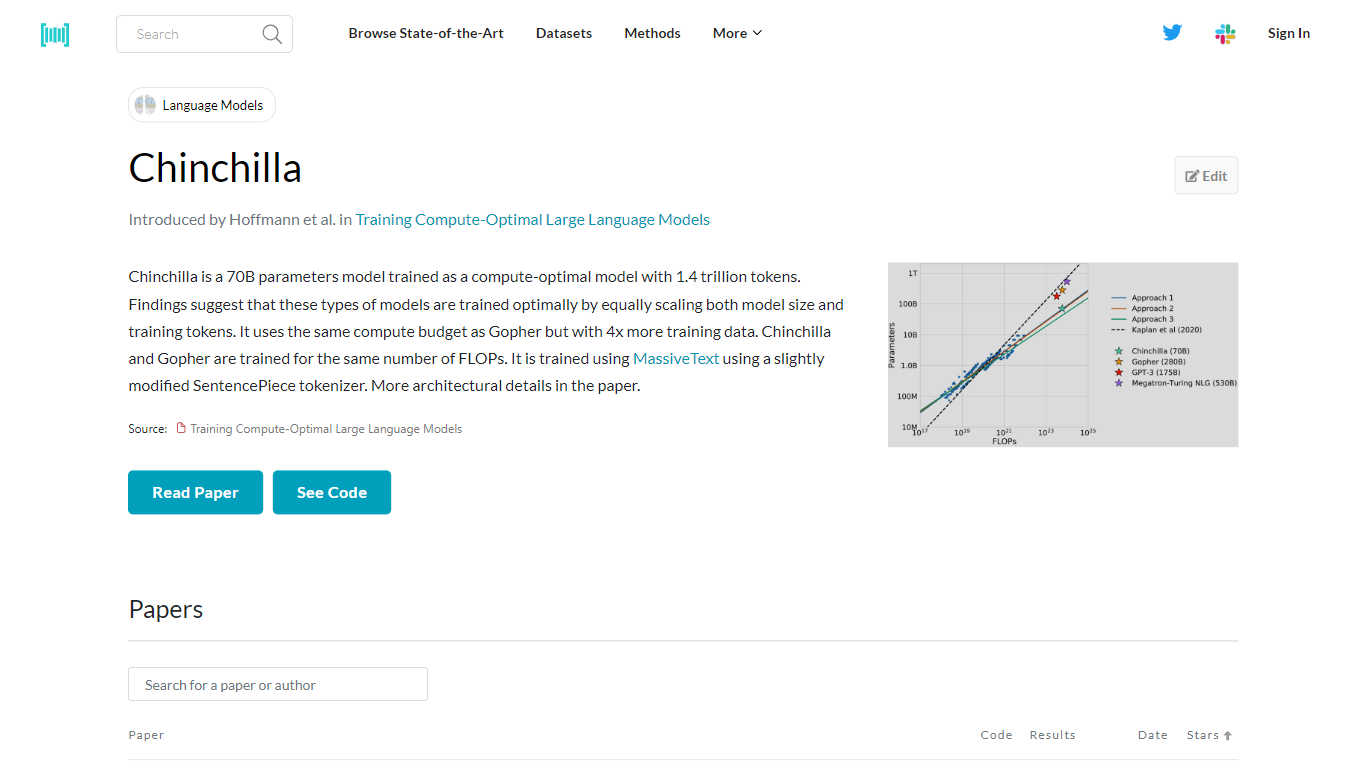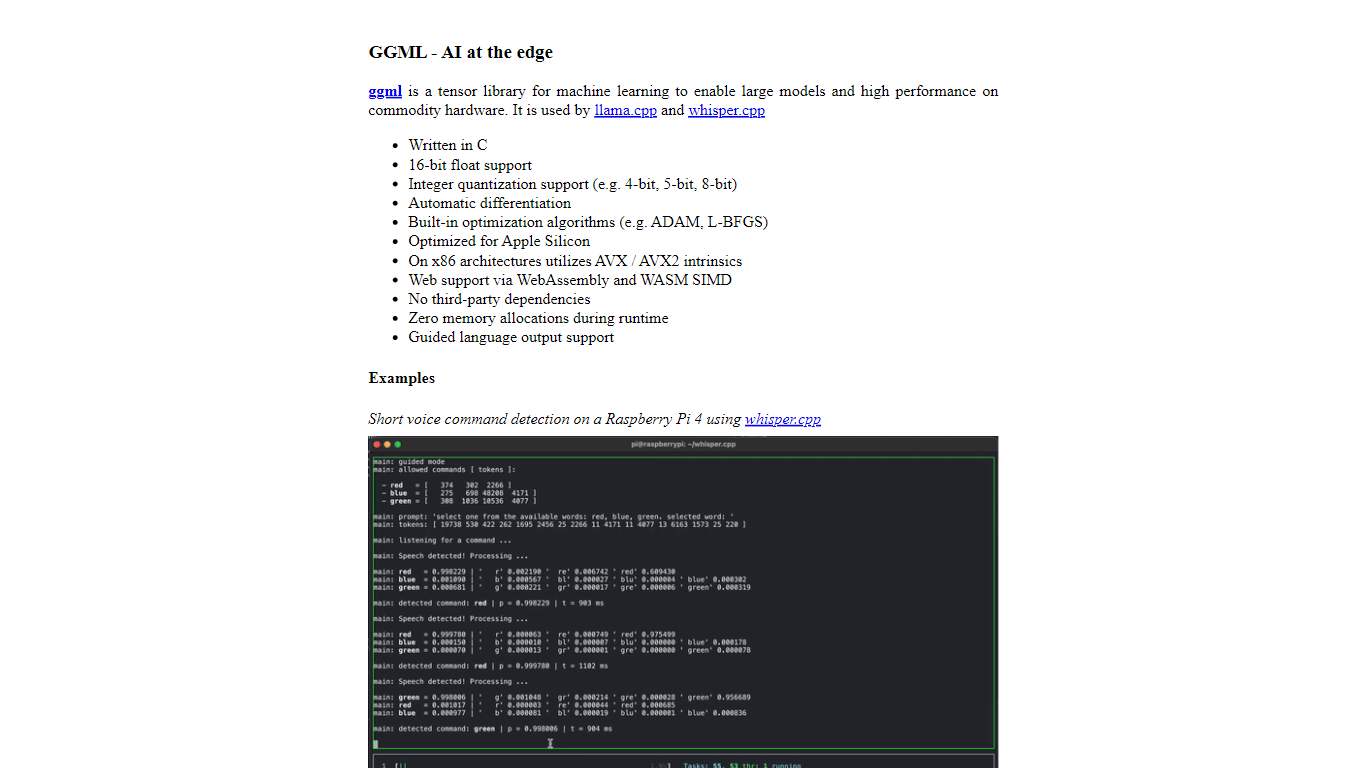Chinchilla vs ggml.ai
When comparing Chinchilla vs ggml.ai, which AI Large Language Model (LLM) tool shines brighter? We look at pricing, alternatives, upvotes, features, reviews, and more.
In a comparison between Chinchilla and ggml.ai, which one comes out on top?
When we put Chinchilla and ggml.ai side by side, both being AI-powered large language model (llm) tools, The upvote count is neck and neck for both Chinchilla and ggml.ai. Join the aitools.fyi users in deciding the winner by casting your vote.
Think we got it wrong? Cast your vote and show us who's boss!
Chinchilla

What is Chinchilla?
Chinchilla is an advanced artificial intelligence model with 70 billion parameters, developed to optimize both model size and the volume of training data for efficient learning. It was trained using an extraordinary 1.4 trillion tokens, with an emphasis on scaling the model and data proportionately. This method of training is based on research that suggests optimal training occurs when model size and training tokens are increased in tandem. Chinchilla shares its compute budget with another model named Gopher, but it distinguishes itself by leveraging four times more training data. Despite this difference, both models are designed to operate under the same number of FLOPs, ensuring efficient compute resource utilization. Chinchilla leverages MassiveText, a vast dataset, and employs an adaptation of the SentencePiece tokenizer to interpret and process data. For a detailed understanding of its architecture and training, one can refer to the paper that elaborates on these aspects.
ggml.ai

What is ggml.ai?
ggml.ai is at the forefront of AI technology, bringing powerful machine learning capabilities directly to the edge with its innovative tensor library. Built for large model support and high performance on common hardware platforms, ggml.ai enables developers to implement advanced AI algorithms without the need for specialized equipment. The platform, written in the efficient C programming language, offers 16-bit float and integer quantization support, along with automatic differentiation and various built-in optimization algorithms like ADAM and L-BFGS. It boasts optimized performance for Apple Silicon and leverages AVX/AVX2 intrinsics on x86 architectures. Web-based applications can also exploit its capabilities via WebAssembly and WASM SIMD support. With its zero runtime memory allocations and absence of third-party dependencies, ggml.ai presents a minimal and efficient solution for on-device inference.
Projects like whisper.cpp and llama.cpp demonstrate the high-performance inference capabilities of ggml.ai, with whisper.cpp providing speech-to-text solutions and llama.cpp focusing on efficient inference of Meta's LLaMA large language model. Moreover, the company welcomes contributions to its codebase and supports an open-core development model through the MIT license. As ggml.ai continues to expand, it seeks talented full-time developers with a shared vision for on-device inference to join their team.
Designed to push the envelope of AI at the edge, ggml.ai is a testament to the spirit of play and innovation in the AI community.
Chinchilla Upvotes
ggml.ai Upvotes
Chinchilla Top Features
Compute-Optimal Training: A 70B parameter model trained with a focus on ideal scaling of model size and training data.
Extensive Training Data: Utilizes 1.4 trillion tokens, indicating a rich and diverse dataset for in-depth learning.
Balanced Compute Resources: Matches the compute budget of Gopher while offering 4x the amount of training data.
Efficient Resource Allocation: Maintains training under the same number of FLOPs as its counterpart, Gopher.
Utilization of MassiveText: Trains using a slightly modified SentencePiece tokenizer on the MassiveText dataset, providing a vast corpus for model learning.
ggml.ai Top Features
Written in C: Ensures high performance and compatibility across a range of platforms.
Optimization for Apple Silicon: Delivers efficient processing and lower latency on Apple devices.
Support for WebAssembly and WASM SIMD: Facilitates web applications to utilize machine learning capabilities.
No Third-Party Dependencies: Makes for an uncluttered codebase and convenient deployment.
Guided Language Output Support: Enhances human-computer interaction with more intuitive AI-generated responses.
Chinchilla Category
- Large Language Model (LLM)
ggml.ai Category
- Large Language Model (LLM)
Chinchilla Pricing Type
- Freemium
ggml.ai Pricing Type
- Freemium
